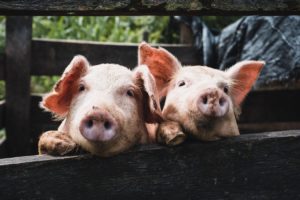Special Issue 5: F2F, Livestock, & AMR
MEP: Livestock breeding ‘neglected’ in the fight to tackle AMR
The Farm to Fork strategy (F2F) sets out an aim to reduce overall EU sales of antimicrobials for farmed animals and in aquaculture by 50% by 2030. However, while the F2F strategy places an emphasis on the role of animal welfare in reducing the need for antibiotics in the sector, it does not explicitly mention the role of animal husbandry in tackling AMR.
According to Green MEP Sarah Wiener, there is a greater need to focus on breeding animals for resilience over productivity. She said that “we cannot focus on performance alone, for example, meat or egg production, but need to consider the health and resilience of animals. Breeding is crucial because animals are bred only for performance without regard to the physiological limits of their bodies. She emphasized that antibiotics cannot be allowed to “compensate for poor hygiene or husbandry practices”.
Why breed disease-resilient livestock, and how?
Fighting and controlling epidemic and endemic diseases represent a considerable cost to livestock production. Much research is dedicated to breeding disease resilient livestock, but this is not yet a common objective in practical breeding programs.
According to this study, the economic value of selective breeding based on disease resistance and tolerance in infectious conditions can be more than three times higher than breeding based on production traits in disease-free conditions. The study pointed out that while disease tolerance has been proposed as an alternative livestock breeding goal trait, to date no breeding company carries out explicit selection for increased tolerance of animals to any type of infection.
Springer Nature, 14 October 2020
How sustainable farms in Italy are improving animal welfare
The episode visualizes examples of sustainable farming in Europe visiting pig farms in Northern Italy, close to Milan, Brescia and Cremona, where they are adopting healthy practices. Head of breeding at Fumagalli, Pietro Pizzagalli, explains that “animal welfare means ensuring that within the breeding environment, the animal can express its natural behaviour at the maximum.”
In the Fumagalli farm, pigs live in partially open-air pens – and have plenty of space to move around. The animals also receive lots of straw, bringing benefits such as the reduction of stress. Conditions inside the barn are constantly monitored, including the air quality and temperature, and data is available in real-time on the farmers’ smartphone. “We have installed a control unit allowing us to check, minute by minute, the main environmental parameters of animal welfare. Thanks to this type of management, we have significantly reduced the use of antibiotics,” Pietro added.
Euronews, 27 April 2021
The F2F strategy sets the general principles for the future of our food system, but on what basis?
The start of the ecological transition makes it necessary to reflect on the role of livestock supply chains in the Farm to Fork strategy. This strategy will represent a substantial change in EU agricultural and food policy and will have a structural impact on food production and the productivity of the entire sector over the next 10 years. The European associations representing the entire livestock supply chain have recently launched a video appeal to be more involved in the legislative process that will lead to the application of the Farm to Fork strategy.
EFA News, 5 May 2021


 Report
Report

